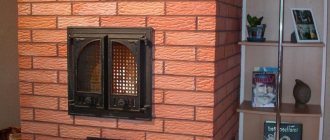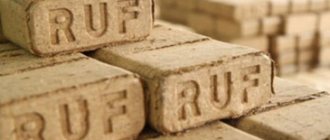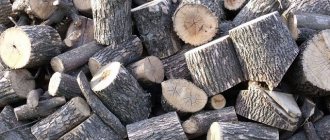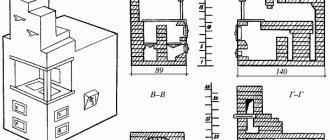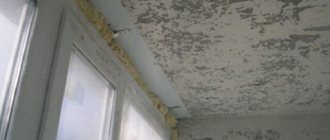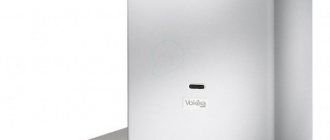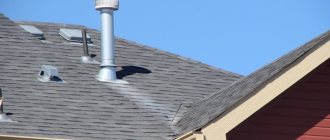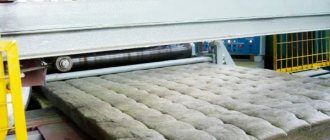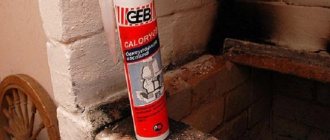A little history
Previously, firewood was burned on a blind hearth - combustion air was supplied through a slightly open fire door. This method has a fire hazard - coals may fall out of the firebox. It is also difficult to accurately select the optimal combustion mode - the regulator is very rough. The ash that covered the coals over time also did not contribute to the normal combustion of fuel - it is an excellent heat insulator (in the combustion chamber of a Russian stove, this is exactly how coals were stored in the ash for the next kindling). Therefore, they began to install a grate - a grate on the hearth through which oxygen enters the combustion zone. The ash is also removed through the grate - nothing interferes with the combustion processes.
The absence of a grate or its damage is not critical - the stove operates without it. True, the efficiency is somewhat lower. And the zone of intense heating of the masonry moves below the hearth - now the base of the ash chamber is also heated. And here you need to be careful if the stove is installed on a wooden base.
Ways to solve the problem
If the grate is damaged, there are two options: fill the ash chamber with a brick or install a new grate.
The option of filling is acceptable only if the integrity is damaged or there are cracks and it is impossible to eliminate them at the base of the ash pit. At the same time, it would be good to replace the firebox door from a blank door to a door with a grille to regulate the flow of secondary air. But this option will definitely create a lot of unnecessary trouble and reduce the efficiency of the furnace. Therefore, we change the grate.
The grate is usually made of cast iron. Cast iron is very different from brick in terms of CTE - coefficient of thermal expansion. This indicator for iron is much higher than for ceramics. Therefore, the grate is always placed freely with a gap of 5-10 mm around the entire perimeter. Some manuals recommend filling the gaps between the masonry and the grate with sand. But this is very stupid advice. Unnecessary and even harmful. Firstly, the sand from the heat of the coals (and it can reach 1100 degrees Celsius) simply sinteres - vitrifies, tightly welding the grate to the masonry and depriving it of the necessary freedom. Secondly, after the first fire, this gap is filled with ash - a non-flammable and non-caking material. So why make unnecessary movements?
It is important to place the grate correctly - an inverted grate quickly becomes clogged with ash and stops working. Therefore, we remember that the grate slits expand downward, not upward. Sometimes the grate has a thickening in the middle - this is to equalize thermal stress, and not to roll the coals to the edges, as some people think.
The figure shows the correct (bottom) and incorrect (top) position of the grate
Usually the grate is placed in a brick trough or in grooves selected in the brick. If the integrity of these grooves is damaged and it is impossible to restore them, you will have to come up with some kind of supports. Sometimes they try to get out of the situation by driving nails, metal plates, etc. into the seams of the masonry. All this is in vain - the metal is quickly tempered and ceases to hold the grate, and more massive pieces of iron are unacceptable - they will tear the masonry.
Stacked and solid options
In different furnaces, the fireboxes may differ not only in size, but also in shape. In this regard, grate manufacturers produce a wide range of products, so you can choose grate bars for even non-standard shaped fireboxes.
By structure they are distinguished:
- Solid cast grate bars . In this case, a product is produced that cannot be disassembled into parts. They are produced in several standard sizes, so when selecting a product you need to rely on the total area of the fuel chamber of the furnace.
- Prefabricated gratings are assembled from several parts. From these components you can assemble a grate for a furnace of the desired shape and size.
What types of grate designs are there?
If we talk about products made of heat-resistant steel, then there are pipe and chain varieties of grates.
As for cast iron grates, there are several types:
- Tiled . Such rectangular grates are widely used in solid fuel stoves and boilers, fireplaces. We can say that these are universal products. You just need to choose the right grate size.
- Baskets . This type of grate was used in open hearths where food was prepared. Currently, they are practically never found.
- Beam . Externally, such grates resemble beams for construction. They are single or double stacked parts from which you can build a grill of any size.
- Movable gratings . The peculiarity of this design is that the grille links can be moved in a horizontal plane, changing the clearance between them. As a rule, such grates are used for long-burning furnaces.
Classification of grate
Cast iron grates for stoves were and are still the best option. Steel is less resistant to this mode of operation and is not able to accumulate heat, as cast iron does. Therefore, despite the heaviness of the material, it is cast iron wood-burning stoves - Harvia, for example, and cast iron grates that are considered the best. Moreover, this applies to models both for baths and for heating living quarters.
However, this classification exists:
- steel gratings are lighter. If you know how to handle a welding machine, they can be made with your own hands - for a bath structure, for example. However, the material burns out faster because it is less resistant to chemically aggressive substances.
- Cast iron grates for sauna stoves or other structures are much more stable and, therefore, have a long service life.
Another classification of devices is related to the type of device.
- Fixed - usually a lattice with different sizes for different types of construction. This element does not change its parameters and does not move. There are several types of grating: tiled flat - lattice flat rectangle. This is the most popular option and is used for any wood-burning sauna stoves, solid fuel heating boilers, fireplaces, and so on. The photo shows the Harvia model.
- basket - designed for open fireboxes and originally developed for cooking. This device is no longer used, and there are almost no open fires, so the popularity of this model is not great;
- beam - in appearance they resemble a construction beam. The lattice of them is assembled with your own hands, choosing the appropriate size and quantity. This is the best method for fireboxes of non-standard sizes.
The chain grate belongs to the same category: its elements are connected by chains. However, in practice it is extremely rare, since it does not ensure complete combustion.
How to install a grate in a furnace yourself
When laying a new structure, installing a grate in a furnace does not present any great difficulties.
According to the sequential masonry scheme, the vent and the base of the firebox are laid out. A cutout is made in the foundation bricks for the grate. Then the process is simple - laying out the base, installing the grille, fixing it with cardboard. It's a different matter when repairs need to be made. Especially when the masonry itself is new and it is not possible to disassemble the entire oven, but you just need to replace the grate. In this case, first of all, you need to carefully study the structure of the furnace. It often happens that the grate bars on one side have a thermal gap, and on the other side the structure is securely fastened with a brick or even two. In this case, you will have to remove the hob and disassemble the stove masonry.
For replacement, it is recommended to select an analogue that matches all sizes of the grille to be replaced. If it is not possible to find a similar one, you can if the nature of the damage allows you to simply saw the structure with a grinder and combine the resulting parts, adding the missing elements along the edges.
Well, if you can’t find an element suitable in size, you’ll have to make a grate for the stove with your own hands.
Why should the grate be made of cast iron?
Cast iron grate for coal RU-3.
LITKOM plant The longevity of a home stove largely depends on the correct choice of the type of grate and the material from which it is made. Cast iron grates are considered the most reliable.
Grate (grid) - designed to maintain fuel, allow air from the ash chamber into the firebox, and also separate the ash chamber from the firebox.
Grate boxes for firewood and coal
Depending on the fuel used, there are grate bars for firewood and coal. Wood-burning grates are also suitable for firing with peat or sawdust briquettes.
Interesting fact: The grate is called a grate because of the wedge-shaped shape of the grate ribs, which allows burnt fuel (ash) to pass into the ash pan.
Cast iron grate for coal RU-3. LITKOM plant (Side view. The photo shows the wedge-shaped shape of the lattice ribs)
Due to the reinforced grate design, coal grates are more massive; their weight, with similar dimensions, is on average 1.5-2 times greater than that of wood grates.
Firewood grate RD-7 (290x135x20 mm; 1.66 kg) and coal grate RU-5 (300x150x30 mm; 3.6 kg) LITKOM Plant
Historical fact: Before the development of the coal industry, furnaces were heated only with wood and there was no need for grates. The stove was heated on a hearth. Initially, grates were used on the railway, in the coal furnaces of steam locomotives.
Coal firebox of a steam locomotive
Designer grate bars:
To make it more convenient to select a grate for the stove, manufacturers produce a series of grates for firewood and coal, which are intended to be used together.
This prefabricated design reduces the cost of replacing grates, because you do not need to change the entire grate, but just replace part of it.
Household grates for coal “RU-1”, “RU-3”, “RU-7”. LITKOM plant.
For example, cast iron grates for coal and firewood from the Rubtsovsk LITKOM Plant are divided into the following overall dimensions:
Cast iron grates for coal:
| Name | Overall size, mm | Weight, kg |
| RU-1 | 250x250x20 | 4,05 |
| RU-2 | 300x200x30 | 4,60 |
| RU-3 | 350x200x30 | 5,45 |
| RU-4 | 400x200x30 | 6,10 |
| RU-5 | 300x150x30 | 3,60 |
| RU-6 | 300x300x30 | 6,30 |
| RU-7 | 300x100x30 | 2,45 |
| RU-8 | 380x75x30 | 2,48 |
| RU-9 | 400x300x30 | 9,03 |
Cast iron grates for firewood:
| Name | Overall dimensions, mm | Weight, kg |
| RO-2 | 300x200x15 | 2,84 |
| RO-3 | 350x200x15 | 3,62 |
| RD-3 | 250x180x25 | 2,60 |
| RD-4 | 250x250x25 | 4,90 |
| RD-5 | 300x250x25 | 5,65 |
| RD-6 | 380x250x25 | 6,45 |
| RD-7 | 290x135x20 | 1,66 |
| RD-8 | 245x135x25 | 4,10 |
| RD-9 | 300x200x25 | 4,20 |
| RD-10 | 250x87x20 | 1,20 |
Additional features of cast iron grates from LITKOM Plant:
The grates are reinforced with intermediate bridges, which do not allow the grate to deform during strong heating.
The Rubtsovsk LITKOM Plant produces a cast iron grate RD-9 “Catalyst”, the design feature of which is the presence of oblong holes on the surface of the grate, which increase the volume of air supplied for combustion.
Cast iron grate for firewood RD-9 “Catalyst” LITKOM Plant
Also, ash remains in the holes, which prevents direct contact with the metal and thereby increases the service life.
Grate grates for deck ovens
Cast iron grate for firewood in the PD-2 deck oven. LITKOM plant
The cast iron grate protects the brickwork from destruction and prevents the air flow from being blocked by fuel.
Cast iron grate for firewood in the PD-1 deck oven. LITKOM plant
Hearth grates for firewood can be used both in stoves and fireplaces.
Why should the grate be cast iron?
Homemade or factory-made steel grates often have to be replaced or repaired due to their burning and deformation under the influence of high temperatures.
Homemade grate from rebar
To increase the maintenance-free service life of the stove, and also to change the grate less often, it should be made of cast iron.
Due to the high carbon content in cast iron, the metal is resistant to intense and frequent exposure to high temperatures. Cast iron is also more resistant to corrosion than steel.
Important: Cast iron is a brittle metal, the grate should not be subjected to impacts, it may crack. Also, you cannot extinguish fuel burning in the firebox with water; a sharp change in temperature may again cause cracks in the grate, which will eventually lead to its unusability.
Important: The grate must be installed with the narrow side of the ribs down, otherwise its service life is significantly reduced.
By purchasing grates for a stove or fireplace made of cast iron, you can be sure of the durability of their operation.
You can select the required size and type of reliable cast iron grate at the Rubtsovsk LITKOM Plant
The material used photographs from the sites:
- https://burgos-m.ru/
Do-it-yourself grate: materials, design, stages of work
As already mentioned, it is easier and easier to make a grate for a stove with your own hands from steel.
There are several options here. The only difference is the purpose for which the lattice needs to be made. For small stoves, which are mainly used for periodic heating of premises, for example, for a potbelly stove, you can use construction fittings with a diameter of 10-12 mm. But for capital heating or heating-cooking stoves, it is better to pay attention to two options - from structural reinforcement or from corners. The advantage of steel reinforcement lies in the availability of this material and the possibility of using previously used sections. In addition, steel reinforcement is more suitable for grates; it does not burn out so quickly, and it is not greatly deformed under the influence of temperature. On the other hand, to assemble this element it is necessary to use reinforcement with a large diameter - 16,18 or even 20 mm. This makes it possible to extend the life of the grille.
The use of steel angles makes it possible to quickly replace a worn-out element; they are not as expensive as other types of rolled products, and by their design they are able to withstand a greater number of heating and cooling cycles than a profile pipe or rod.
The manufacturing technology is quite simple. To assemble a structure from steel reinforcement, it is recommended to first make simple calculations. First you need to calculate the geometric dimensions of the lattice. Here the length, width and height of the product are taken into account. In this case, the height plays no less a role than the length and width; a discrepancy between the height and the cast iron parameter will not allow the grate to be correctly installed in place. A height that is too small will interfere with proper loading of fuel, and a height that is too high will raise the grate above the surface of the bricks, and thus create a space in which ash and unburned fuel will accumulate.
The next step is to calculate the area of the grating. Next, the number of rods is calculated. First, 40% of the area is calculated, approximately how much is occupied by the spaces between the rods. And then the number of rods is calculated. When calculating, it is recommended to round the resulting values; it is not necessary to strictly adhere to the figure of 40%; nothing bad will happen if the gaps are 35 or 45% of the grating area.
The stage of practical work begins with the preparation of material for work - first, the rods are cut; accuracy and precision are required here. After this, a template for assembly is made, markings are made on a section of the board, and nails are simply hammered in to secure the sections of reinforcement. After checking the correctness of the layout, electric welding connects all the elements into one structure. First, tack is done at several points, and then all seams are finally welded around the entire circumference.
Upon completion, the resulting structure is checked in all planes; this is done on a flat surface using a bench angle - all angles must be correct, the lattice itself must be in the same plane. No bends or deformations.
What is needed for production?
It is possible to make a grate with your own hands. What to make a grate for the oven from? It is better to use heat-resistant steel as a material, because it is impossible to work with cast iron at home. To make the grille, you can use any materials that have heat-resistant characteristics. This could be fittings, corners, steel pipes or strips of metal.
To make grate bars you will need:
- the metal from which the grille will be made,
- steel rods for creating partitions;
- ruler, tool for making marks;
- grinder for cutting material;
- welding.
From reinforcement
It is not difficult to make a grate from reinforcement yourself. It is enough to select the desired length of the product and cut the reinforcement with a grinder. It is necessary to determine the number of strips and take into account clearances for ventilation.
When the required amount of material has been prepared, you can begin welding the grate using rods. Do-it-yourself grate bars for the stove made from reinforcement can be seen in the photo below:
Peculiarities
The grate is made by hand as a single piece; most often, cast iron is used for its production. The grille of the structure has holes through which air is drawn to the fuel.
The part is laid in such a way that the grille holes are directed from the door opening to the rear wall. For large combustion chambers you will need several grates.
It is quite possible to make a grate with your own hands. It is an important element in the combustion chamber, thanks to which it is possible to obtain efficient combustion of fuel. The designs of modern furnaces and boilers are constantly changing, and details are being improved. But there is a functional element that you can’t do without. This element is the grate.
The grate serves to support wood, coal and fuel briquettes. Through its holes, ash pours down, thereby freeing up space for a new batch of firewood. Grate bars vary in design and are made from different materials.
Price policy
A quality product cannot have a low price. High-quality cast iron parts that will last for many years are expensive. And vice versa, light and cheap ones, made from a mixture of unknown materials, will quickly become unusable.
Approximate prices for furnace grates:
| Size | Price |
| 800x200 mm | 1200-1600 rub. |
| 915x250 mm | 1100-3000 rub. |
| 260x540 mm | 400-500 rub. |
It is better to buy these products in specialized stores. They provide a wide selection of models with different materials and price categories. Consultants will help you make the right choice based on your preferences, the nature of the fuel, and the frequency of operation of the heating device.
Selection criteria and main varieties
Before you start assembling it yourself or buy a ready-made model, we recommend that you familiarize yourself with and then adhere to a number of important criteria and rules:
| Criterias of choice | Detailed Descriptions |
| High-quality combustion and burnout | The price of higher quality models is usually an order of magnitude higher. However, such devices are capable of ensuring complete and high-quality combustion of fuel at the highest level and, if necessary, drying it a little. The grate must have a nearby source with a regular and complete supply of oxygen. This is also necessary to create an intense burning fire. |
| Durable suitable materials | Cast iron products are considered to be of the highest quality. They heat up quickly, are able to give off heat and retain it for a long time even after the fuel has completely burned out in the fireplace. Other metals are slightly inferior to it. They have a lower cost, are not as durable and cool quickly, thereby ceasing to release accumulated heat. |
| Functionality | Depending on your wishes, as well as the characteristics of the heating unit, you can buy either a stacked or one-piece unit. Solid structures are not able to be disassembled into smaller parts and elements, unlike more universal and at the same time more expensive typesetting ones. Also, from kit models, if necessary, you can assemble a grill of any shape and size, since this variation consists of many parts and folds like a construction set. |
The instructions, which detail all the characteristics and features of the selected model, are very important, since they will help you become more familiar with the main aspects and details in this matter.
It is interesting to know: if the grate has a belt shape, it belongs to the category of chain, while products presented in the form of pipes belong to the category of pipe.
Criteria for selecting grates for a furnace
The choice of grate is determined by several factors, which include the following:
- Type of heating device (structure).
- The type of fuel used - the grate model will depend on this point. If you plan to heat the stove with coal, then you should purchase more massive grates that can withstand considerable mechanical load and extremely high temperatures. Lighter weight products are suitable for wood fireplaces and stoves.
- The grate must correspond in size to the seat in the combustion chamber. More precisely, the dimensions of the grate are usually immediately included in the design of the furnace, based on the sizes of these products offered for sale.
- The distances between parallel grate bars for wood-burning stoves must total at least 40% of the grate area. This factor will help to avoid difficulties when cleaning the product from ash. In addition, gaps less than recommended will create obstacles to the free circulation of air flow. And this, in turn, will lead to a decrease in the productivity of the heating device, as well as to a decrease in the level of safety of its operation. Insufficient air exchange creates difficulties both for complete combustion of fuel and for normal traction. And the delay of combustion products is unacceptable, as this is fraught with very serious consequences.
If the gaps of the grate are larger than necessary, then not only ash, but also unburned fuel particles will fall into the ash pan. The consequence is a completely unnecessary waste of fuel, since unburned particles of firewood or coal that have fallen into the ash pan will no longer produce the expected heat transfer. And in this case, everything is not very good with security.
Self-installation of the grate
When heated, any metal will expand, therefore, the grate must be installed with a gap of at least 0.5 centimeters on each side. The ledge in the combustion chamber should be cut off (we are talking about the one on which the edges of the grate are laid). If the heating stove is made of brick, then the place for installing the grate should be located below the door at a distance corresponding to the height of one brick. This can be explained very simply: such a rise will prevent burning coals from falling onto the floor.
Also, during installation, you do not need to embed the grille too tightly. The degree of expansion for different materials is also different, therefore, too strong fixation of a cast iron product can cause cracks in the brickwork or deformation of the metal. Upon completion of the installation of the grate, the grooves must be tightly filled with sand (but without using cement!).
On a note! In the case of a triangular cross-section of the grate rods, the product must be laid exclusively with triangles downwards!
Dimensions of grate for the furnace
The dimensions of cast iron grates for a furnace depend on the type of fuel. Their possible sizes are presented in the table.
| Firewood | Coal |
| 330*252 mm | 350*205 mm |
| 300*252 mm | 300*205 mm |
| 250*252 mm | |
| 250*180 mm | |
| 140*180 mm | |
| 120*140 mm |
If it is necessary to install beam gratings, you need to remember that the length is 250, 330 and 470 mm.
Tile grate
One of the most common types of grate is the tiled grate. The main feature of this design is the observance of strictly fixed dimensions. This grille is designed for an installation site of a certain size.
A mandatory condition must be met - the presence of a gap between the outer perimeter of the grate and the walls of the firebox of at least 5 mm. If this size is not maintained, the cast iron grate may expand greatly when heated and damage the firebox.
Specifications
A structure of any size can be assembled from beam grates.
Depending on the type of fuel used and the design of the boiler, the grate bars are made of monolithic parts or hollow pipes. The latest models are air-cooled, which reduces the likelihood of metal melting. The shape and size correspond to the firebox of the appliance and the door configuration through which they must pass during installation.
The following types of grates can be installed in ovens:
- Tiled. They are a rectangular product with parallel crossbars. They are universal, as they have different intervals for all types of fuel.
- Baskets. Products with a volumetric configuration that is effective but difficult to maintain.
- Beam. They are set parts from which grates of any size and configuration can be assembled. They are used in self-manufacturing of boilers for assembling non-standard grates.
The correct choice of grate is as important as the chimney, damper and vent. Every detail is important in making a boiler.
What is a grate and why is it installed?
The grate is a grate that allows the air flow to penetrate directly to the combustion site from below, and the ash to fall through the holes into the compartment reserved for it. It can be cast iron or steel. Installing this accessory solves a number of problems , in particular, it:
- Divides the firebox into two zones - the combustion chamber itself and the ash pan.
- Used for placing and drying fuel.
- Distributes the air flow from the ash compartment.
- Provides high-quality traction.
- In combination with the door, it allows you to control and adjust the flame.
It is not possible to make a grate intended for installation in a furnace from every metal. After all, it is exposed to high temperatures and under the influence of atmospheric oxygen can oxidize quite quickly. Only cast iron can resist such a complex destructive influence for as long as possible.
Recommendations for choosing cast iron grates for the stove
A correctly selected grate increases the efficiency of the furnace and reduces fuel consumption. Which option is best depends on:
- type of oven;
- firebox dimensions;
- fuel used.
Type of oven
Each type of grate is better suited to a certain type of heating device. for conventional stoves and fireplaces. in solid fuel boilers. Although flat ones are also used, especially in small models.
For long-burning devices, choose a movable option for better regulation of air flow. And when using open stoves, it makes sense to choose a basket model.
Grate for the stove: choosing the best cast iron grates
A stove design with a closed combustion chamber or an open hearth with a grate will work best with cast iron grates. But the correct choice of this element depends on several factors:
- Combustion chamber size;
- The type of fuel that is planned to be used;
- Furnace designs;
- How to use the oven.
Grate bars cast from cast iron are made in the form of a solid grate, a grate with jumpers, in the form of individual elements and special types of grates designed for open hearths.
The fact is that the length and width of the combustion chamber for stoves of different designs have significant differences. Some stove designs have a rectangular firebox, with grates covering the entire area. For other ovens, a small grate 25 cm wide and 30 cm long is sufficient. Some stoves are designed to fire logs of double length - 80 cm or even 1 meter. Therefore, when choosing, the size of the firebox is taken into account. Single beam models are also important for construction - a full standard grate is not always required, especially in small ovens; many of them are small in size and can get by with 4-5 grates.
For a stove that uses only wood, standard grate sizes of up to 25 cm in length are usually selected. In rare cases, when meter-long logs are used, the grate length is selected to a maximum of 900 mm and a width of 800 mm. But to use a furnace for coal, the grates are selected to be larger in size - 350 by 350 mm. In this type of product, not only the dimensions are increased, the thickness of the casting itself is slightly larger than conventional wood grates, but the distance between them is slightly smaller. This shape is necessary to retain small coals; when burning wood, the size of individual coals is much larger than that of hard coal.
The design of the furnace is also taken into account - for heating furnaces, mainly long grate models are used, in which the casting of the ribs has jumpers between them. And in heating and cooking stove models, grates with a large number of rods in the grate are used, this allows for several modes of fuel combustion and several options for heat treatment of products, from fast heating to slow smoldering on coals.
And of course, experienced stove makers will advise installing grates with rods depending on how the stove will be used. This concerns, first of all, the process of adding fuel to the firebox. If a firebox door is used, then thin grates can be installed, and if loading will be done through burners, then it is worth thinking about the additional strength of the metal.
Blower
The vent is the first air chamber in the furnace, which usually has a door. The blower chamber is laid out according to the dimensions of the grate. It can be wider than the grate and overlapped by overlap of rows of side walls up to the grate. Through the ash chamber, air enters the firebox through the grate; in addition, it serves to collect ash and other fuel waste.
Blower: 1 - blower chamber; 2 - blower door
The blower door can be of any size, but no larger than the blower door. Through this door it is convenient to remove ash from the wide ash chamber, and as for air, there is enough of it with a door even half as small as shown. Practice has shown that the best place for the blower door is on the second row of the stove masonry. The door is installed in the blower window, which is connected to the blower chamber. When the door is open, air rushes through the window into the ash chamber. The more the door is open, the more air will enter the ash pan and the better the fuel will burn. Air, especially coming from below, is needed to maintain fuel combustion. Hence the name - blower.
Sometimes the door is used to regulate the draft in the oven: the less the door is open, the less draft. It is not necessary to install a blower door, but it is advisable, because without it a draft can occur in devices that do not close tightly, such as valves. And then the heat will go out into the chimney, and the stove will release less heat into the room.
If there is no door, the draft is adjusted using a valve. The more the valve is open, the stronger the draft, and with it more air will enter the stove and the draft will be stronger, which means the fuel will burn better. If there is no door in the ash window, but there is a view, then the fuel will constantly burn with the same intensity, but with this intensity a lot of heat will go into the pipe, which the brick could absorb. The viewer cannot regulate either thrust or fuel combustion.
Let's say that the door is a few millimeters smaller than shown in the figure. In any case, the seams should be no more than 3-5 mm. To do this, the laying must be carried out from the door to the corner of the stove. The last seam turns out thicker than expected, and such a seam cannot be made. To maintain the thickness of the seams, you need to break off a quarter from a whole brick in the corner of the wall where the door is located. You will get a three-quarter and a quarter. Next, you need to break off a larger quarter, taking into account the thickness of the seam. It will seem to lengthen the whole brick. Instead of a whole brick, you need to put the first three-quarter and the second quarter - it will take the place of the thick seam. The masonry of the top row above this quarter will be made of a whole brick - it will block this quarter. If a thick seam is obtained near the door, then you need to do the same in this place.
If, because of the door, the firebox turns out to be several millimeters narrower and the flues are wider, then this will not affect the operation of the stove. In some areas of the country, stoves are installed without a blower at all. In these furnaces, the combustion doors have windows-openings for air intake instead of a blower. In such fireboxes, only wood and peat fuel burns, but the firewood is buried in ash and forms a lot of firebrands. When they burn out, the heat goes into the chimney, so the firebrands have to be pulled out of the firebox and placed in a bucket of water. Such ovens are made due to the lack of grates. If they exist, then they are installed above the blower chamber.
